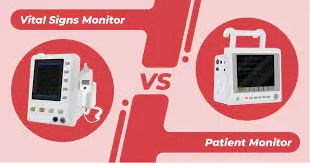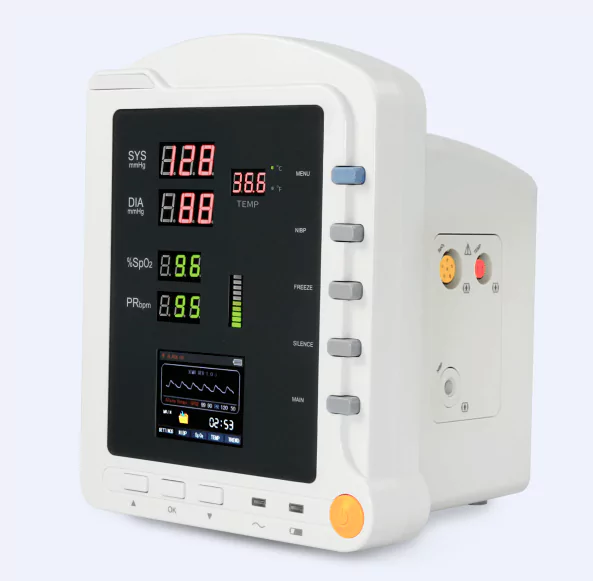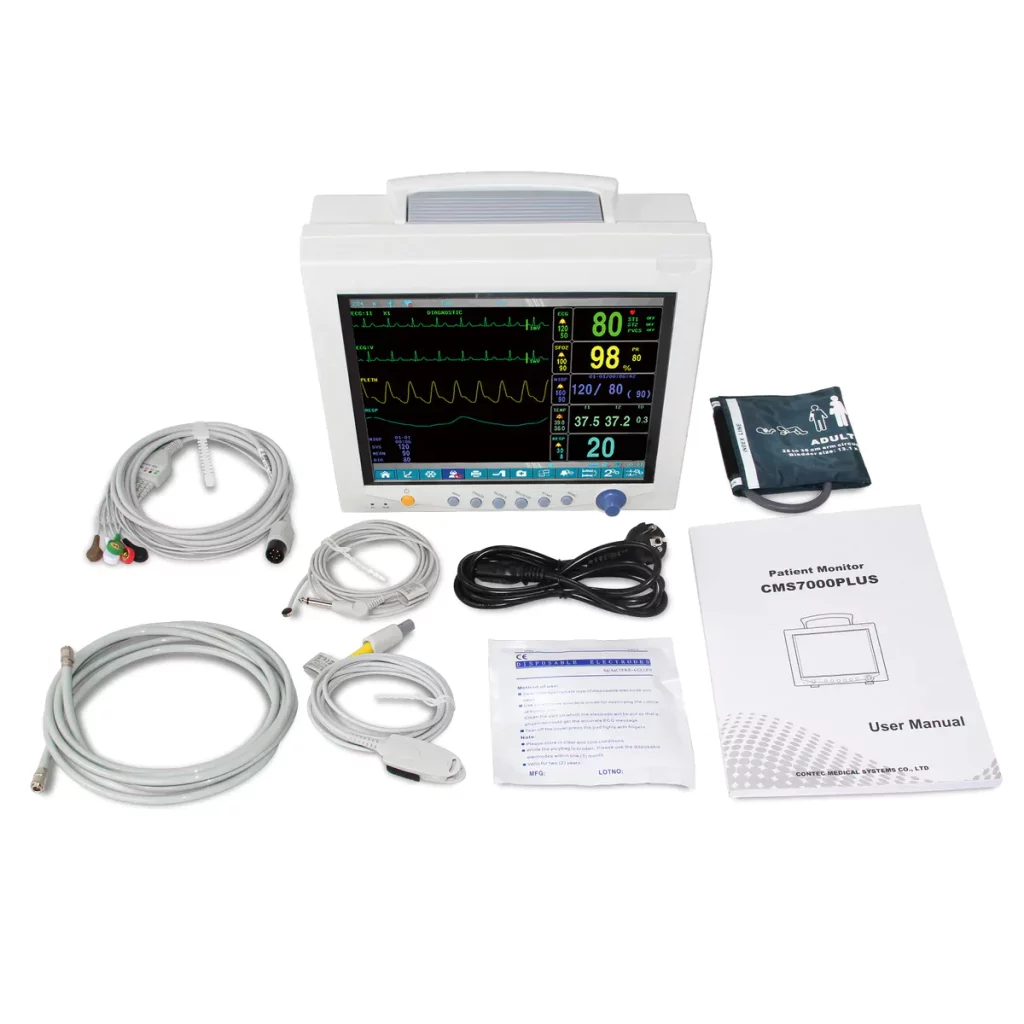- Your cart is empty
- Continue Shopping
What is the Difference Between Patient Monitor and Vital Sign Monitor?

Understanding the subtle differences between seemingly similar medical equipment is pivotal for delivering optimum patient care. This article delves into the distinctions between patient monitor and vital sign monitor, exploring their functionalities, applications, and financial implications. It aims to clarify which device might be more suitable in various medical settings, focusing on their usage in Pakistani healthcare facilities.
Table of Contents
Understanding the Difference Between Patient Monitor and Vital Sign Monitor
A patient monitor, or a Multi-Parameter Monitor, is a comprehensive device designed to display a wide range of physiological data crucial in patient care. These monitors measure heart rate, blood pressure, respiration rate, temperature, and oxygen saturation. Advanced models can monitor additional parameters like End-tidal CO2, Cardiac output, Anesthetic agents, and Invasive blood pressure.
Patient monitors are primarily utilized in critical care environments like operating rooms, intensive care units, and during patient anesthesia. The technology behind patient monitors has evolved significantly, leading to the development of portable variants that can be worn on the body, enhancing patient mobility while ensuring constant monitoring. The features of patient monitors include high-resolution displays, touchscreen interfaces, alarm indicators, and battery backup systems.
In the Pakistani market, patient monitor prices vary based on factors like brand, features, and additional functionalities. While the average cost is around PKR 665,000, high-end models from brands like Welch Allyn and GE Healthcare may be priced higher due to their advanced features.
The Role of Vital Sign Monitors
On the other hand, vital sign monitors are focused on measuring a basic set of patient vitals: heart rate, respiratory rate, blood pressure, and body temperature. They are versatile devices used not only in hospitals and clinics but also in less critical settings such as nursing homes, assisted living facilities, and home care.
These monitors often have large digital LED displays, touchscreen capabilities, printing features, and EMR connectivity. Vital sign monitors are typically more affordable than patient monitors. For instance, Welch Allyn models in the Pakistani market range from as low as PKR 92,300 to around PKR 277,200.

Choosing the Appropriate Monitor
Selecting between a patient monitor and vital sign monitor depends on several factors. The nature of the medical setting and the patient acuity level are paramount considerations. Patient monitors are better suited for high-acuity settings where in-depth and continuous monitoring is crucial. Conversely, vital sign monitors are adequate for routine checks and low-acuity patient care.
Budget is another essential factor. Patient monitors with added functionalities and parameters come with a higher price tag. Therefore, a more cost-effective vital sign monitor might be preferable for basic monitoring requirements.
Patient Monitors: Multi-Parameter Guardians
Difference Between Patient Monitor and Vital Sign Monitor: Patient monitors, or Multi-Parameter Monitors, are sophisticated devices integral in scenarios requiring continuous and comprehensive patient observation. They display various physiological data, including heart rate, blood pressure, respiration rate, temperature, and oxygen saturation.

Advanced models even track end-tidal CO2, cardiac output, anesthetic agents, invasive blood pressure, and more. These monitors are essential in critical care settings like operating rooms, intensive care units, and during anesthesia, providing alerts to medical staff about significant changes in a patient’s condition.
Conclusion
In conclusion, while difference between patient monitor and vital sign monitor play essential roles in patient care, their differences in capabilities, applications, and costs make them suitable for varied medical environments. Understanding these differences is critical for healthcare providers, especially in Pakistan, to choose the right equipment that aligns with their medical needs and financial constraints. This article aimed to illuminate these distinctions to assist in making informed decisions for better patient outcomes.
Frequently Asked Questions
What is the primary function of a Vital Sign Monitor?
A Vital Sign Monitor is used to measure and display basic vital signs such as pulse rate, blood pressure, oxygen saturation, and body temperature. These devices provide essential data for diagnosis and treatment planning in various medical settings.
What additional features does a Patient Monitor offer compared to a Vital Sign Monitor?
Patient Monitors, also known as Multi-Parameter Monitors, offer a broader range of functionalities. Besides tracking basic vital signs, they can monitor ECG, end-tidal CO2 (ETCO2), blood oxygen levels, and more. They are used in situations requiring comprehensive monitoring of a patient’s physiological parameters, such as during surgeries or in critical care units.
In what settings are Vital Sign Monitors most commonly used?
Vital Sign Monitors are versatile and used in various medical settings, including hospitals, clinics, nursing homes, and even in home healthcare. They are particularly useful in scenarios where quick assessment of basic human vital signs is necessary.
How does the pricing of Vital Sign Monitors compare to Patient Monitors?
Generally, Vital Sign Monitors are less expensive than Patient Monitors. The price difference is attributed to the broader range of features and capabilities found in Patient Monitors. For instance, a Vital Sign Monitor is often sufficient for basic monitoring needs, making it a more budget-friendly option for many healthcare facilities.
When should a medical facility consider investing in a Patient Monitor?
A medical facility should consider investing in a Patient Monitor when there is a need for comprehensive patient monitoring. This includes situations like monitoring patients under anesthesia, in intensive care units, or any other setting where continuous and detailed monitoring of multiple physiological parameters is crucial.

